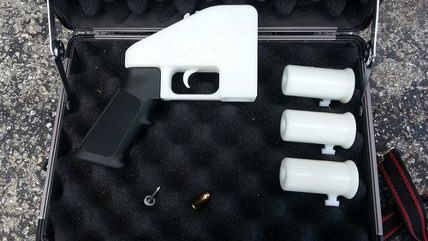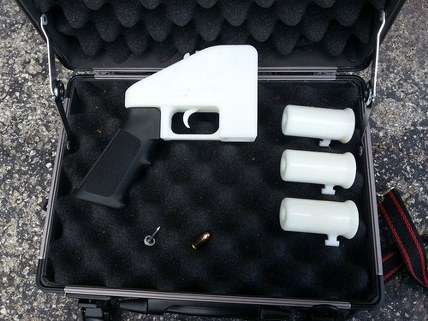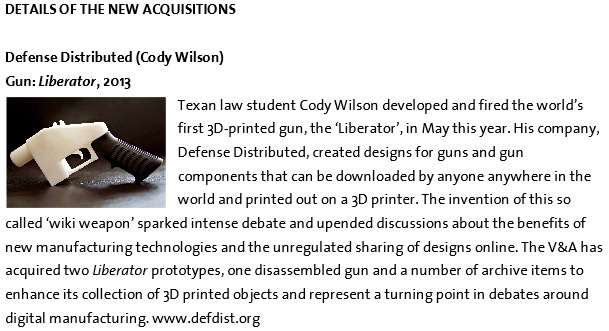First 3D Printed Gun Is Now a Museum Exhibit


How old-hat is knocking out firearms on a desktop 3D printer? It's so old hat that the first gun so created and successfully test-fired, the Liberator, has been acquired by the U.K.'s Victoria and Albert Museum and put on display as an example of "contemporary design…what is new, influential, innovative or experimental." In just a few short months, DIY firearms manufacture on a 3D printer has gone from subversive technology threatening the established order to exhibit-worthy example of innovation. Not that it doesn't still threaten the established order.
In a press release (PDF) announcing recent acquisitions, the Victoria and Albert Museum announced, in part:
Texan law student Cody Wilson developed and fired the world's first 3D-printed gun, the 'Liberator', in May this year. His company, Defense Distributed, created designs for guns and gun components that can be downloaded by anyone anywhere in the world and printed out on a 3D printer. The invention of this so called 'wiki weapon' sparked intense debate and upended discussions about the benefits of new manufacturing technologies and the unregulated sharing of designs online. The V&A has acquired two Liberator prototypes, one disassembled gun and a number of archive items to enhance its collection of 3D printed objects and represent a turning point in debates around digital manufacturing. www.defdist.org
There's nothing there to which to object, though I hope the museum plans to expand the exhibit as fast-moving innovation brings new designs along at a rapid clip. A single-shot rifle has already been printed, as has a repeating pepperbox pistol. An equivalent to the Guggenheim's famous (and fascinating) Art of the Motorcycle exhibit would be intriguing, though at the speed matters are developing, it might cover two or three years of innovation instead of almost a century and a half.

Six months ago, who would have guessed that the Liberator pistol would already be a museum exhibit as new developments turned it into…a revolutionary artifact and a harbinger of innovations to come?


Show Comments (9)